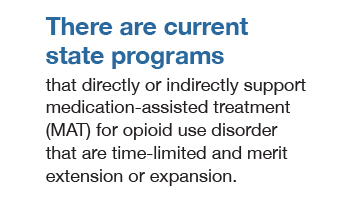Closing the Treatment Gap for Opioid Use Disorder in Colorado
On average, someone dies in Colorado from an opioid-related overdose every 15 hours. Medication-Assisted Treatment (MAT) is more effective at keeping individuals with opioid use disorder (OUD) in treatment than detoxification or counseling without medication.
The FHPC and Practice Innovation Program @CU conducted a study to identify where there is insufficient buprenorphine treatment provision to meet the needs of Coloradans, calculate the workforce changes necessary to fill these treatment gaps,
and offer recommendations to enable targeted resource allocation and better access to care for individuals with OUD.



The study produced three products designed for state policy makers, administrators, providers, and community stakeholders:
- Brief: Closing the Treatment Gap for Opioid Use Disorder in Colorado
- Interactive mapping application to display geographic information about Medication Assisted Treatment (MAT) in Colorado. The mapping tool can be used to: explore prevalence of opioid use disorder, examine proportion of individuals with OUD receiving buprenorphine treatment, identify gaps in geographic distribution of MAT prescribers, and evaluate the number of additional providers needed to address the treatment gaps by county
- StoryMap: a visual representation of the data presented in the policy brief; readers can scroll through highlighted key points and maps
For more information, contact Stephanie Gold.